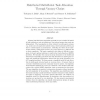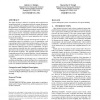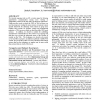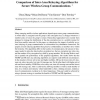60 search results - page 12 / 12 » Framework for Dynamic Life Critical Situations Using Agents |
ICRA
2003
IEEE
14 years 25 days ago
2003
IEEE
Existing task allocation algorithms generally do not consider the effects of task interaction, such as interference, but instead assume that tasks are independent. That assumptio...
ATAL
2005
Springer
14 years 1 months ago
2005
Springer
This paper develops a model for exceptions and an approach for incorporating them in commitment protocols among autonomous agents. Modeling and handling exceptions is critical for...
WWW
2002
ACM
14 years 8 months ago
2002
ACM
We describe ongoing work on I2I, a system aimed at fostering opportunistic communication among users viewing or manipulating content on the Web and in productivity applications. U...
PE
2002
Springer
13 years 7 months ago
2002
Springer
Many emerging mobile wireless applications depend upon secure group communications, in which data is encrypted and the group's data encryption key is changed whenever a membe...
WIA
2001
Springer
13 years 12 months ago
2001
Springer
A formal device is said to be adaptive whenever its behavior changes dynamically, in a direct response to its input stimuli, without interference of external agents, even its user...




